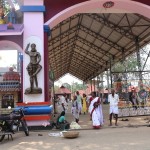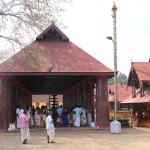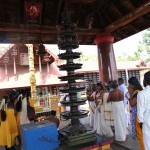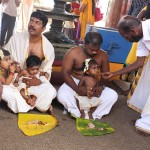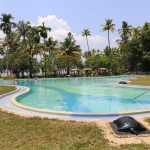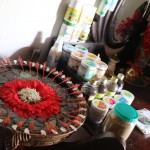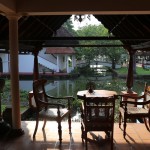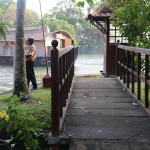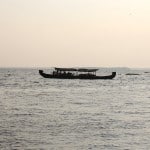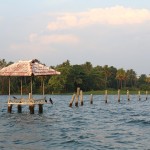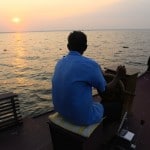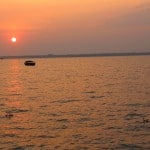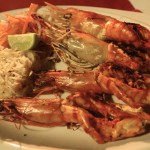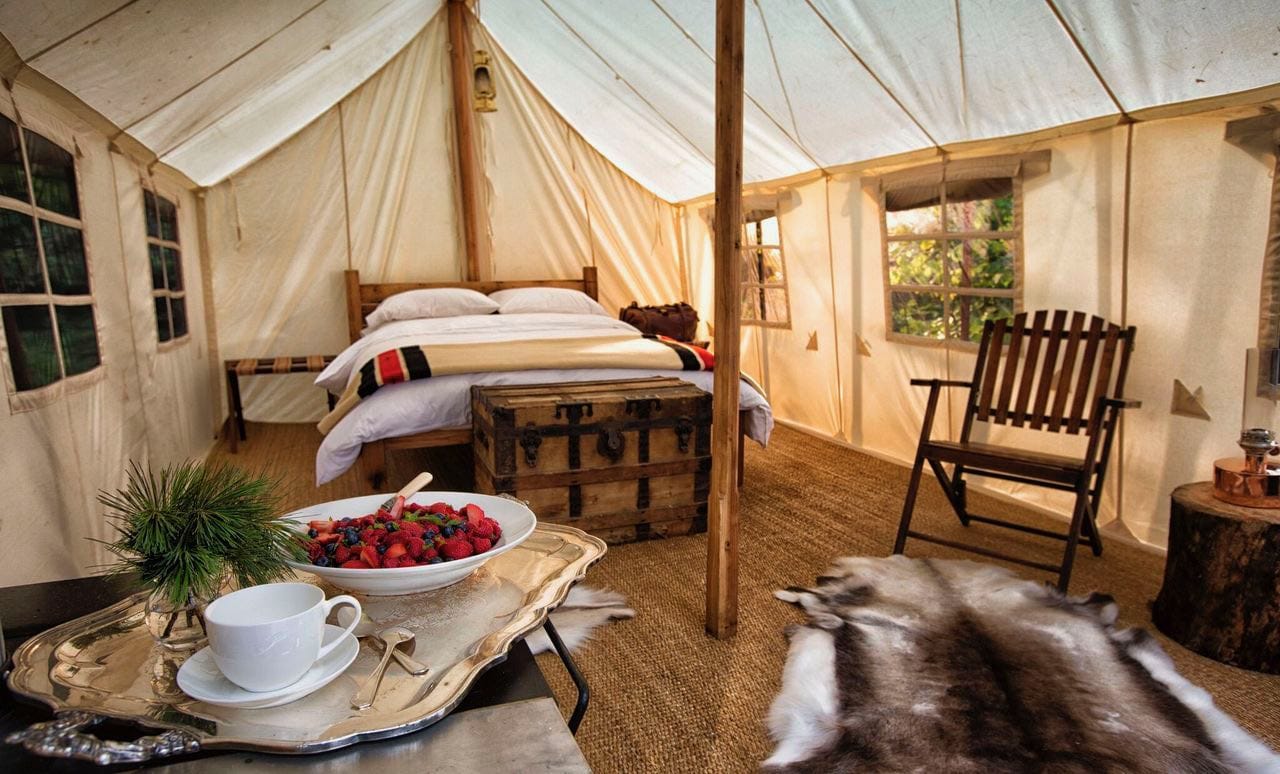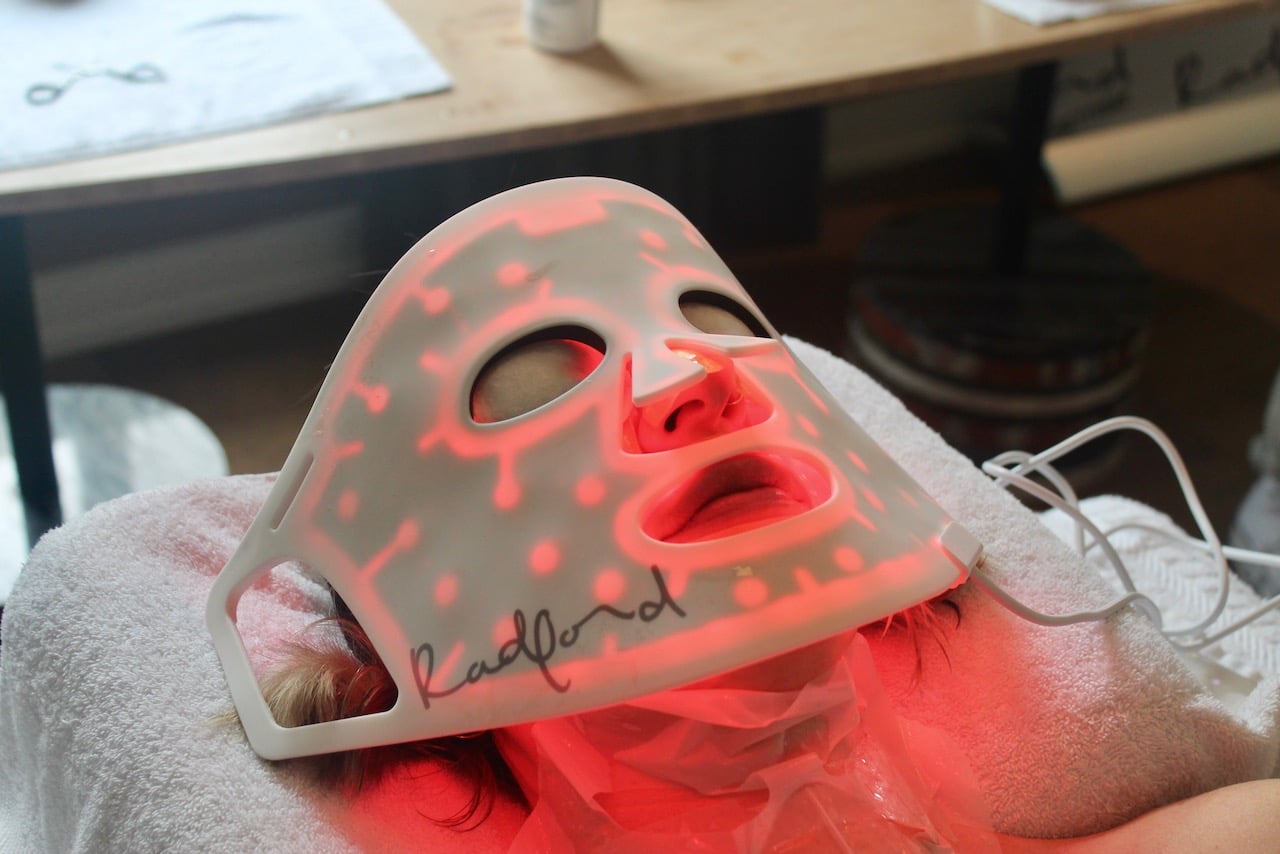“Indian food is a fiction,” chirps my guide at 8am as we roll out of Cochin and head south for Kerala’s famed backwaters. I press him to finish his thought and he spends the next 30 minutes explaining why Indian cuisine as westerns know it is but a fallacy. “You eat Indian food in New York or London and each dish has been crafted to suit the tastes of the local population. Few considerations have been made to honour thousand year old time tested recipes, principles of ayurveda in the kitchen or even using authentic ingredients.” I agree and mention the same can be said for the world’s interpretation of Chinese food. He giggles with glee.
The road trip that morning would take 3 hours, our conversation ebbing and flowing as we zoomed across a network of bridges that soared over lily pad adorned lakes and rivers. As we continued to chat about Indian food and its required ritual of respect he slowly nodded his head and infused the conversation with a lament for local, “Here in Kerala you can eat cow. In the rest of India they cut off your head. Here you can keep it on your shoulders!” His chest puffed up with pride. I took note that the ability to eat beef here is one that represents not just a dietary habit but that of freedom which implies a notion that India’s south is modernizing quicker than the rest. He continues by scoffing, “you won’t find cows wandering through the streets in Cochin!”
Kerala is perhaps India’s most fascinating region, cut off from the rest of the country for hundreds of years by its surrounding mountain range, more easily accessible to trading partners sailing across the Arabian Sea via the Spice Route. Today she is the ultimate melting pot with a population made up of 20 percent Christian, 25 percent Muslim and shy Hindu minority.
After spending time in the hustle and bustle of Delhi and Mumbai, this particular pilgrimage would have me sussing out peace and quiet in a country which is known most for its traffic, overpopulated streets and pollution. I was on a mission to find my own slice of paradise in India, albeit a bit skeptical but nonetheless game for the challenge. I love when the odds are against me.
We made a quick stop in the small town of Turavur to wander through the local Hindu Temple. Mothers and fathers held cute infants dressed in fancy frocks, faces decorated in ceremonial pigments for a ritual my guide simply described as “eating of the first rice.” He went on to explain, “on a child’s first birthday they are brought to the temple to indulge in their first sampling of solid food. A few grains of soft rice are offered by the priest.” It was a joyous occasion as siblings, aunties and uncles took pictures on their phones, cooing at the wee children in hopes they would look up and flash a smile.
We spent another 30 minutes winding down the road before arriving at a wee dock which sat in the shadow of an old stone bridge. Moments later a longboat arrived and a smiling attendant grabbed my luggage and motioned me inside. We puttered up the river for the next 30 minutes, a soft breeze whistling through my hair as we coasted past a legion of Kerala’s iconic houseboats. Our driver slowed down and we spun in a semi circle as a gate was raised, ushering us into the intimate canal system which runs through Coconut Lagoon.
I immediately fell in love with the place, a smile flashed across my face and I literally found goosebumps crawling across my arm. As our boat pulled up to the hotel’s lobby (which also doubles as a dock) I was greeted by a choir of smiling staff who welcomed me with the sweet sound of a flute. I bowed my head as a woman placed a floral wreath around my neck and gracefully accepted a fresh coconut to quench my thirst.
I’m immediately offered a tour by the property’s knowledgeable Naturalist who spends most of his time offering guests early morning bird watching tours and a stroll through Coconut Lagoon’s very own butterfly garden.
We first stumble across a grazing Vechoor cow and I’m told, “while a regular cow gives 15 liters of milk a day, the Vechoor gives only 2-3 liters. Not good for popularity, the result is that these prolific animals were crossbred to near extinction. A major conservation effort ensued where we joined hands with the local agricultural college. Today there are plenty of Vechoors which add a calming, contentment to the authenticity of this place.”
Coconut Lagoon really is an ecotourists dream, featuring an experimental solar powered boat, biomass digester used to turn garden and kitchen waste into rich soil and sustainable fuel and water programs. One quickly feels as though they are living in a remote village rather than a resort. More than eight of Coconut Lagoon’s 33 acres are given over to rice cultivation, making one feel as though they are truly living among farmers.
As we stroll towards the resorts private villas I can’t help but hold my heart as I watch fisherman in tiny indigenous wooden canoes hauling up their catch. The exterior canal which separates the lake from the resort also features a fish farm which the kitchen puts to good use.
The distinctive architecture of Coconut Lagoon has its own tale to tell. Some of these mansions are over 150 years old, transplanted here, beam by beam, timber by timber, from the old houses of the country that had fallen to ruin. Restoring them was a process that took several years and much love and labour. The hotels first task was to track down the Aasaris, the descendants of the master craftsmen who had originally created these dwellings.
A hammock sways in the wind outside of the villa I’ll be calling home sweet home as my guide beckons me up the steps. I can’t help but swivel on my heels to take in the view, fishermen sailing across the horizon. I’m told, “each villa has a different bed, cupboard and chest of drawers. The furniture was sourced not at a store but slowly, from traditional homes and produced by the famed craftsmen of the region.” Furnishings also rely on local materials, offset with linen, rough-woven cotten and other natural fabrics.
In the bathroom guests are greeted by environmentally friendly lotion, hand soap and shampoo produced by a local beauty cooperative. I dab my finger in a bit of lemongrass scented cream before stepping into the backyard where two lounge-chairs sit perched over my own private pool. We walk along a petite path before pulling back a set of wooden gates where a private balcony overlooking a quiet rice paddy offers proof that one can truly encounter Indian calm.
Take a pleasant stroll through lush garden, across a little wooden bridge and you’ll find yourself at the resorts Ayurveda Centre. I’m greeted by the spa’s two doctors who spend the next 20 minutes chatting with me about my health. Ayurveda is India’s ancient science of healing and is said to be over three thousand years old. It is purely herbal based, its medication made from the roots, leaves, sap and bark of trees, shrubs and weeds; from spices and their extracts.
I opt for the Rasayana Uzhichil treatment which features a trio of therapies. My doctor introduces me to two gentlemen who will be offering up my treatment and walk along a dimly lit hall, no clue what I am getting myself into.
As soon as the door closes behind me I’m asked to remove all of my clothes. Moments later I stand nervously wearing nothing but underwear only to find a glaring therapist who motions me to put on disposable underwear which looks like an eye patch attached with a string of dental floss. I’m mortified but also humoured at the same time by my predicament. I feel a pat on my back and am told to sit on a wooden stool in the centre of the room. A cool breeze flows towards me as I look over a rice paddy and think, “this is going to make for a good story at my next dinner party.”
The treatment begins as a head massage. My oil soaked hair rubbed across my skull before ear lobes and neck are attended to. The therapist then begins a series of powerful movements, oil and spice hands slip across my back and arms. The massage is so intense that I find myself clinging to my seat just to hold on. I’m now moving across the room, inching closer to the open window as a crack of thunder and flash of lightening boom across the horizon. Moments later a cool mist fills the air as I watch a storm cloud race towards me. I’m being tossed and turned, the four legs of my stool scraping across the wooden floor below as natures magic unfolds before me.
I’m tapped once again and am greeted by a second attendant who motions for me to hop up on a wooden table where I spend the next hour indulging in a four hand massage. My barely naked body is doused in a rust coloured oil which smells of sesame and spice while powerful hands wash over me, digging through the knots which live in the top of my head to the tips of my toes.
I feel like a tenderized Butterball turkey as I’m escorted down a hallway to a tiny wooden steam bath. I tip toe inside, quickly sitting on a warm stool before two attendants drop two wooden doors around my neck. I now feel like I’m sitting in an upright guillotine, smirking as my body from the neck down quickly finds itself dripping in hot moisture.
My Ayurvedic moment finishes in a private bathroom. Perhaps I shouldn’t have been shocked when an attendant slipped into the room and spent the next 20 minutes scrubbing soap across my oily exterior. I shook my head with a giggle and whispered, “never in my wildest dreams did I ever think a stranger would be scrubbing me in the shower.” Apparently in paradise one doesn’t lift a finger. This is the life of a Maharaja.
I find myself waddling out of the spa with only a few moments to spare before I embark on a sunset cruise aboard a beautifully resorted Kettuvallam. Each evening guests gather to sail on one of Kerala’s famed house boats which feature thatched roof covers and wooden hulls. I’m still in a heavenly daze from my massage as we sail towards the middle of Lake Vembanad to watch the sun set across the horizon. We’re offered cool glasses of lemon ginger tea as a musician serenades us with his flute. My fellow passengers are just as quiet, clearly mesmerized by the natural beauty of Kerala’s backwaters which are postcard perfect at crimson sunset.
Back at the resort I’m greeted by the bartender at Heron’s Pond Garden Lounge where I sip on a freshly prepared Coconut Mojito as fireflies flicker around my feet. That evening I dined al fresco under the stars at Vembanadu Grill, romanced by the smell of sweet BBQ. I selected the menus most popular offering, the Crustacean Experience, which featured masala slathered rock lobster, tiger prawns and jumbo prawns. I allowed my utensils to feel lonely as pulled up my sleeves and allowed my fingers to snatch up the scorched sea-treats. I shelled to my hearts content, hearing nothing but the sound of crickets singing in the garden below. A full moon that night splashed across my plate, offering illumination to my hard work. I licked my curried fingers clean, rubbed my bloated belly and sighed to my waiter “I suppose it is true then. One can find peace and quiet in Indian paradise.”
You May Also Enjoy Reading…
A First Timers Guide to Doing Delhi
Celebrating India’s Colourful Holi Festival
Exploring the Many Faces of Mumbai

